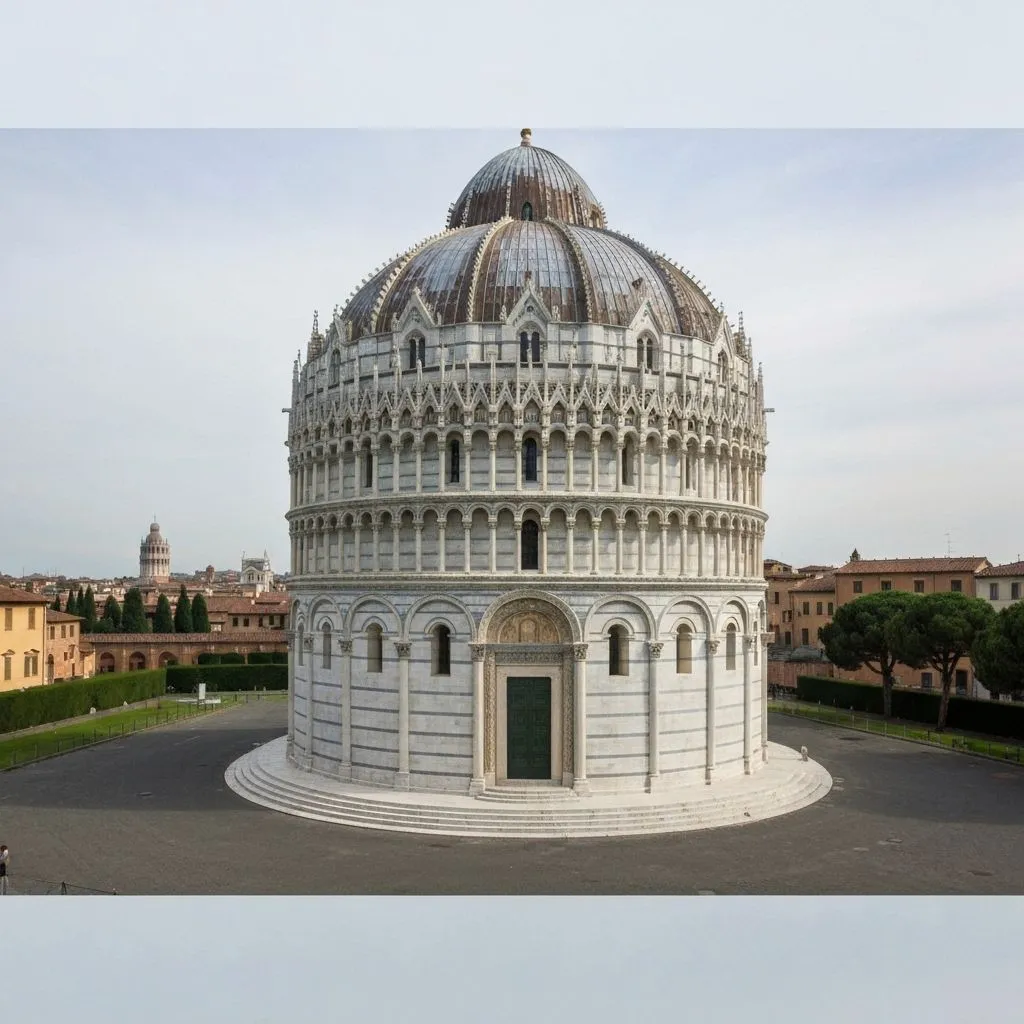Back to what to see
history
Pisa Baptistery – History, Architecture, and Artistry
Explore the Pisa Baptistery, Italy's largest baptistery, renowned for its harmonious design, exquisite marble, and historical significance.
3/1/2025
8 min read

The Baptistery of Pisa: A Masterpiece of Medieval Architecture
Rising majestically near the Leaning Tower, the Pisa Baptistery of St. John stands as a symbol of medieval craftsmanship and religious devotion.

Origins and Construction
- Foundation: Construction began in 1152 under architect Diotisalvi, blending Romanesque and early Gothic styles.
- Purpose: Dedicated to St. John the Baptist, it served as the city's primary site for baptisms for centuries.
- Materials: White and grey Carrara marble lines the exterior, creating elegant geometric patterns.
Architectural Highlights
- Circular Design: The Baptistery's round form symbolizes eternity, a design shared by other Tuscan baptisteries.
- Dome and Acoustics: Its vast domed ceiling creates remarkable acoustics, allowing a single voice to resonate across the interior.
- Ornate Portals: Intricate carvings and sculptures depict biblical scenes and local saints, reflecting Pisa's artistic heritage.

Interior Splendor
- Marble Pulpit: Crafted by Nicola Pisano, the pulpit features detailed reliefs illustrating the life of Christ.
- Fonts and Fittings: Marble baptismal fonts from the 14th century remain in pristine condition, showcasing expert stonework.
- Decorative Mosaics: The apse dome is adorned with vibrant mosaics that capture the medieval devotion to divine imagery.
Visiting Tips
- Location: Adjacent to the Cathedral and Leaning Tower, forming Pisa’s celebrated Piazza dei Miracoli.
- Guided Tours: Recommended to fully appreciate the pulpit carvings and acoustical wonder.
- Best Time: Early morning or late afternoon for soft light on the marble facade.

The Pisa Baptistery remains an enduring testament to medieval ingenuity, merging art, architecture, and religious symbolism into a single, unforgettable monument.
About the Author

Dr. Luca Bianchi, Historian
Passionate about history and travel, I created this site to help fellow travelers make the most of their visit to the Leaning Tower of Pisa. With years of experience exploring landmarks worldwide, I share practical tips and insights to enhance your journey.
Tags
Pisa Baptistery
Medieval Architecture
Italian Churches
Marble Artistry
Acoustics
Comments (0)
Leave a Comment
Loading comments...